Take one look at the Hyte Thicc Q60 and you might come to the conclusion that this is an all-in-one liquid cooler that prioritizes looks over performance. However, that is not strictly true. Yes, the Q60 is adorned with a 5-inch screen, a litany of RGB LEDs and some neat cabling, but there’s also a chunky CPU cooler underneath.
The Q60 is a big beast. It’s an all-in-one liquid cooler with a radiator that’s twice as thick as some, at 52mm. That’s reportedly intended to utilize space that isn’t often fully utilized in modern PC cases, Hyte said. The company opts for a thicker radiator instead of a longer one.
The Q60 is billed as a 240mm radiator, due to the two 120mm Thicc FP12 fans included, but it’s actually 288mm from top to bottom. The remaining space is taken up by the pump, which is located on the radiator instead of the more traditional spot behind the cold plate. The advantage of this is that, for the Q60 at least, there is more space for the enormous screen above the CPU.
The 5-inch screen of the Q60 can best be described as a small computer. It includes a quad-core Arm Cortex CPU, with 2 GB DDR4 running at 2,666 MT/s and running at 1.3 GHz. It also has 32GB of eMMC storage. All to run the many widgets, which Hyte has dubbed ‘faces’, available through the Hexus application, which is pretty much a must-install with this cooler.
Thicc Q60 specs
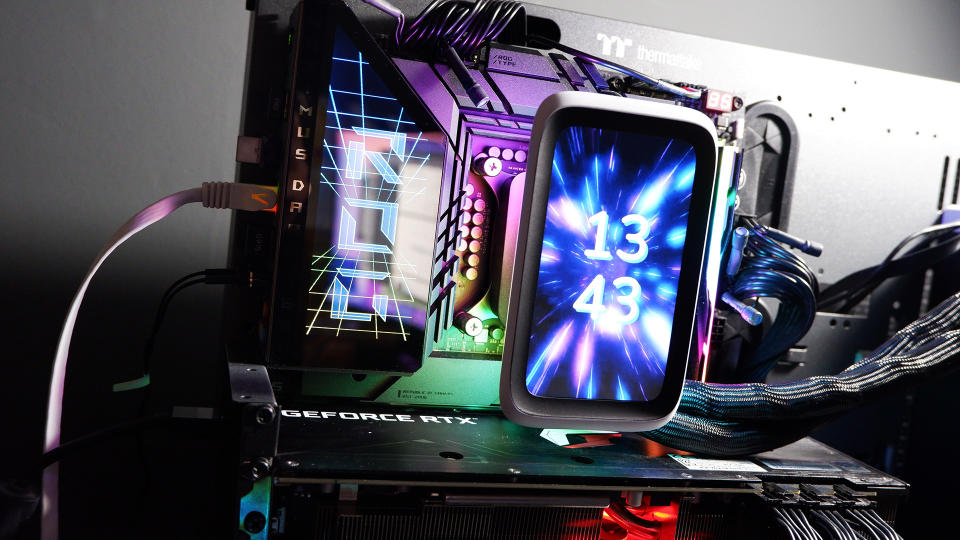
Compatibility: LGA 1700, 1200, 115X, 2011*, 2066* – AMD Socket AM5, AM4, TR4* (* available from Hyte support)
Dimensions: 120 x 288 x 52 mm (cold plate: 56 x 56 x 1.5 mm)
Radiator: 288mm, aluminum
Pump: Ceramic, up to 4,500 rpm
fans: 2x Thicc FP12 120 mm, fluid dynamic bearing, up to 3,000 rpm
Relief: Full RGB on radiator logo, array behind screen
Screen: 5-inch IPS, 60 Hz, 300 nits, 720 x 1280 resolution
Storage: 32GB eMMC
Memory: 2GB DDR4
Price: $300 | £330
“You can watch Shrek in its entirety on the Q60 if you want,” a Hyte rep told me.
I’ve settled on a series of “faces” of system monitoring: fluid in temperature, fluid out temperature, CPU temperature, and GPU temperature. Oh, and the clock, which I can’t seem to remove. There are plenty of options to choose from and a few more on the way: clock speeds, fan speeds, and throughput are all reportedly on their way to the app. You can also set the screen to show your current media playing through Spotify. And play your own media. And you are free to change the background. It can actually do a lot of things.
However, the screen can only display four custom faces, which feels quite limited. I want a lot more. Although I’m told you can also throw out a bunch of Android commands and run whatever you want on this thing, and even ditch the whole Hyte Hexus application altogether.
“If you are a software developer and have the knowledge, tools and capabilities, we have kept the door open.”
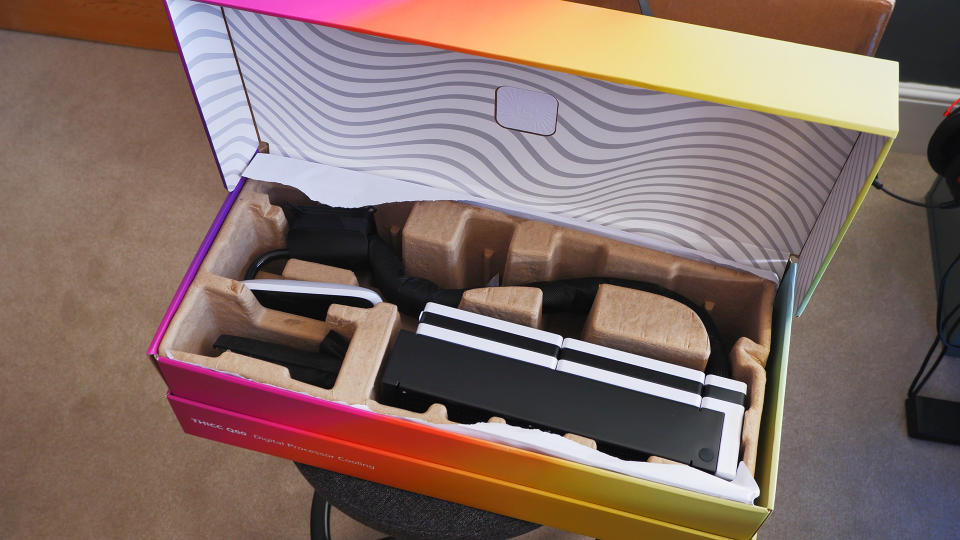

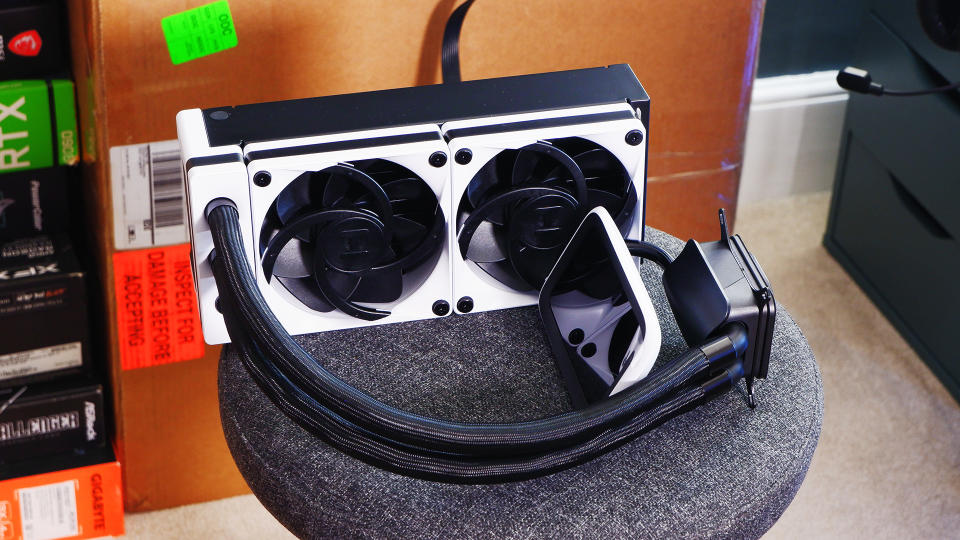

Normally I’m not a fan of sticking a screen on peripherals and parts for no apparent reason other than ‘you could’. But I’m a bit into the central screen of the Q60. It’s impressive and not at all as dominant as I originally expected. The subtle two-tone design of the rest of the cooler helps with that: if the fans were also adorned with RGB lighting, it would probably be a bit at a lot of. As it stands, the screen is pretty bad.
But as I said at the beginning, the Q60 isn’t just about looks. It’s a capable liquid cooler in its own right.
In balanced mode, with the PC idle, the Q60 is nominally audible. It is just a bit noisier during gaming. I’ve run the Metro Exodus benchmark many times and the only noise coming from the Q60 is a steady, polite hum. It also doesn’t fluctuate noticeably between speeds, making the noise it produces much less disturbing.
It was only during more CPU intensive workloads that I started to take note of the noise coming from the fans and pump assembly. Additionally, I found that for adequate cooling performance I had to turn the cooler to performance mode. This significantly increases the fan speed even when idling, creating a significantly louder hum.
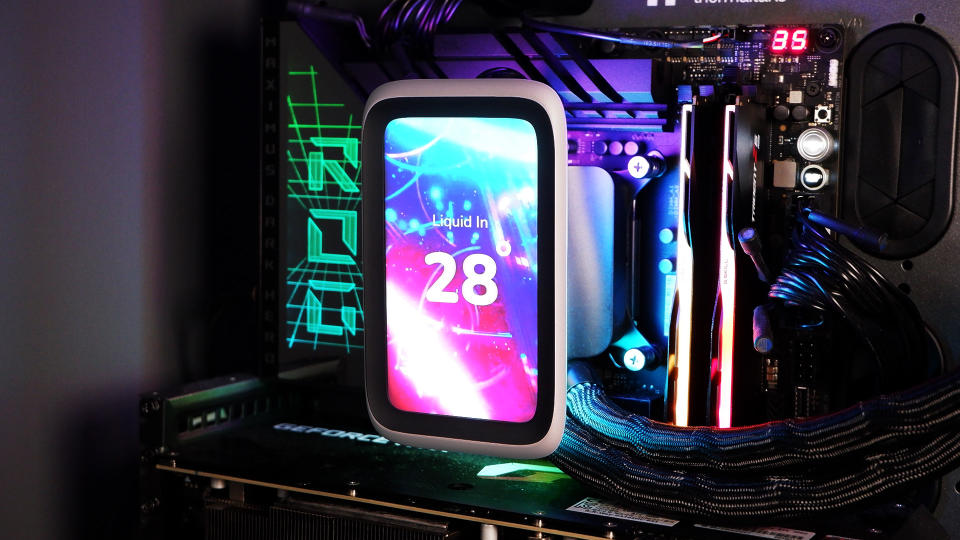

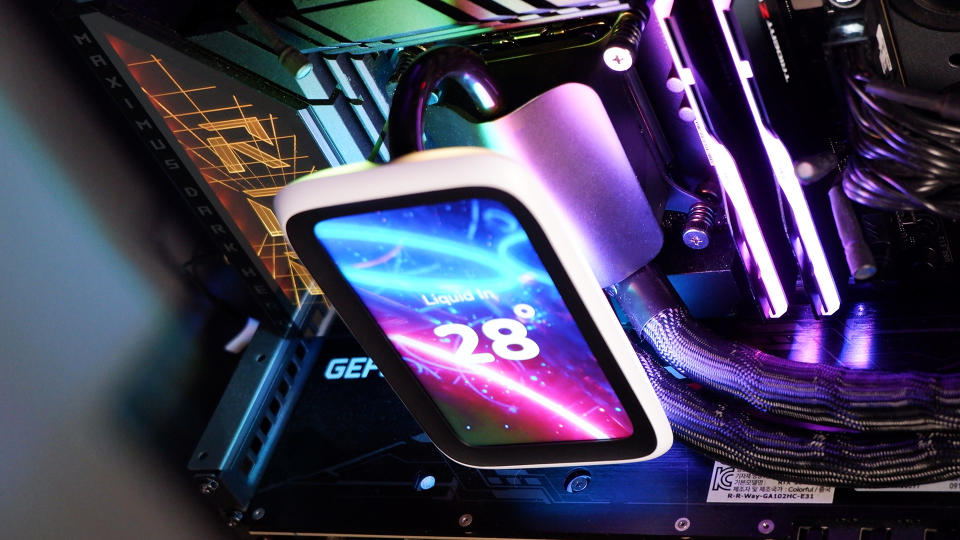

Though in return, this cooler delivered the lowest gaming temperatures of those I tested, including a 360mm AIO.
However, the Q60 isn’t as capable as others when really pushed to its limits. The Q60 did not do so well in Cinebench R23. There was no thermal limitation, but the Q60 was the only cooler to reach a temperature of 90°C.
It also couldn’t quite handle the resilient demand of the X264 benchmark, which the Q60 seemed to beat more than any other. That may be because the Q60 also seemed to be the slowest cooler to reset to idle temperature. At a certain threshold, around 35°C, the fans turn off completely, so the CPU tends to stay warmer than other coolers that don’t do this.
It is possible to reduce idle temperatures into the 20s by setting the Q60 to be controlled by a firmware-set curve. There are a few control options you can choose from in the Hexus application: Hexus, firmware or motherboard. Firmware consists of two simple curves: one for fans, the other for the pump. With this set I saw the idle temperature drop to 27°C because the fans were never fully turned off.
The fans go up to a whopping 3,000 RPM, and don’t come close to Hyte’s preset fan curves. That said, I’ve tried running at full speed and it’s not worth the extra noise generated; I only registered a marginal reduction in CPU package temperature through Cinebench R23.
So it’s a bit of a mixed bag. If you want pure cooling performance for the money, look elsewhere. But if you want to strike a balance between performance and noise levels, and especially plan on gaming, the Q60 is a stronger choice.
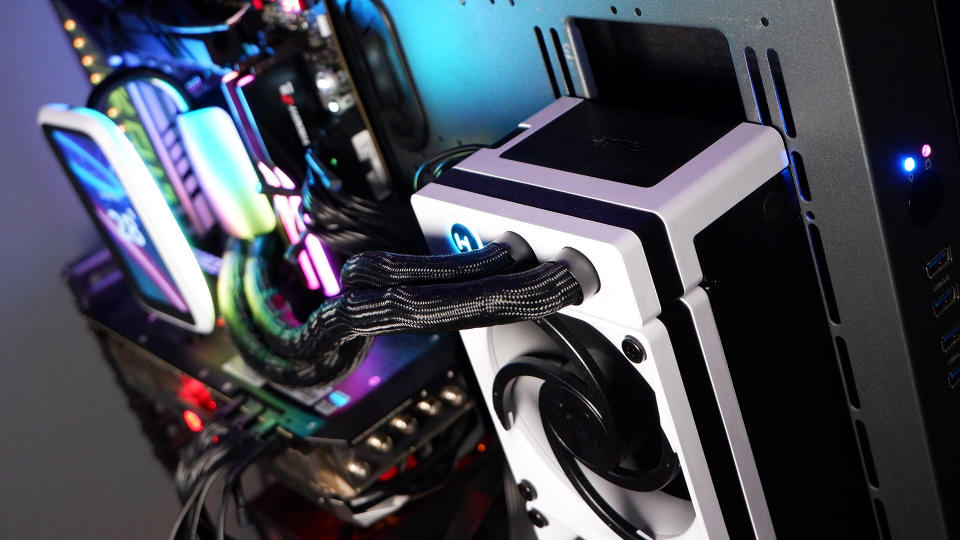

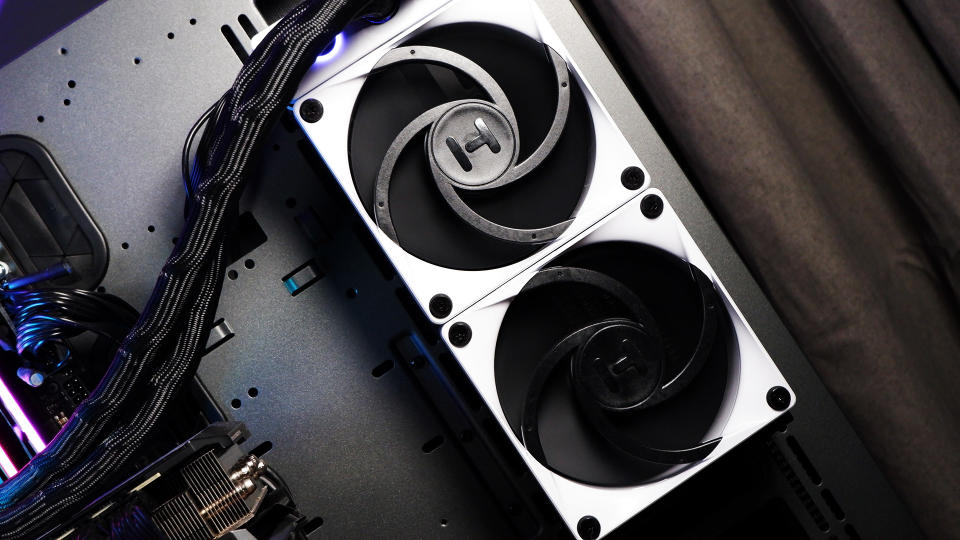

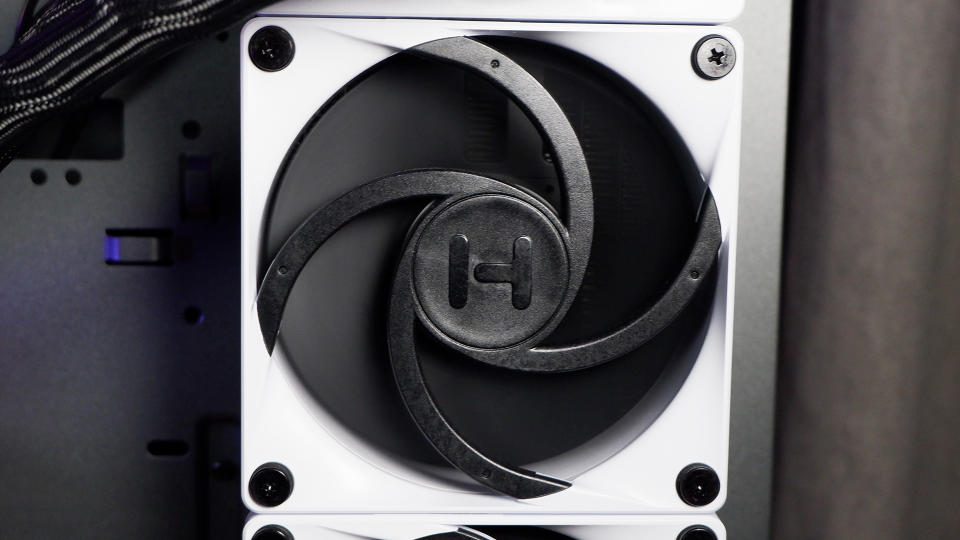

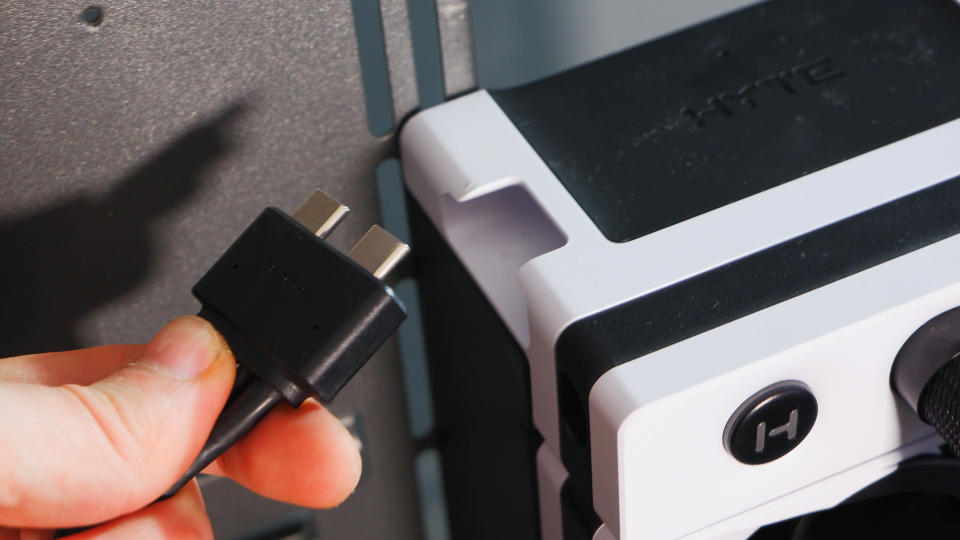

Buy as…
✅ You always want system monitoring: If you like to keep track of what your PC is doing at all times, the Q60’s 5-inch screen is a good way to do that. Provided you can see it in real life, of course.
✅ You don’t have room for a 360 mm radiator: You can get some pretty spectacular cooler performance for gaming with the Q60, even when combining much larger units.
✅ You long for a tidy PC: The way in which the few required cables are connected to the Q60’s radiator block ensures that cables can be hidden very easily. It’s very neat.
Don’t buy if…
❌ You need the best cooling performance for the money: The Hyte Q60’s extra features add up, and that means it costs a pretty penny where even larger AIOs don’t.
❌ You don’t want more software on your PC: The Hyte Hexus application is simply a piece of software that runs in the background. It’s pretty much a necessity to get the most out of the Q60’s screen unless you’re a little savvy with Android commands.
There are even more reasons to consider the Q60.
For example, it is extremely neat and tidy. Only a handful of cables are required, gathered into a single dual USB Type-C connector and connected seamlessly to the radiator. It’s then easy to keep this single cable out of sight, and, unlike most liquid coolers, there’s no need to run cables around the VRM or RAM. The screen is controlled via cables embedded in the mesh-covered tubes, which are therefore thicker than most liquid coolers on the market.
The fans can also be purchased separately and connected in series with a special cable-free connector or specially fitted cables. The same applies to the RGB lighting set, which is linked together via USB-C. The Q60 offers one spare port for both connections, called Nexus Link ports, and means it can act as a hub for a lot of other things.
It also comes with a six-year warranty, which matches those of Corsair and Arctic.
The looks alone keep me coming back to the Q60. While they must mean a lot to you, they can be rivaled not only by simpler devices, but often significantly cheaper ones too. The Q60 costs a whopping sum of $300/£330. With a huge screen in the middle of it, I can see why. Although for so much money, and being so thick, I’m a little disappointed that it can’t match a more traditional 240mm cooler in demanding tests.
Although I’ll be damned if it doesn’t look good.